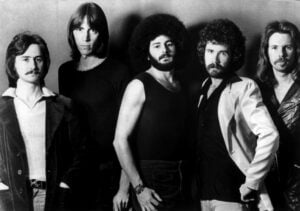3 Classic Rock Albums That Brought Icons Back to the Top

via John Fogerty / YouTube
Maintaining longevity in the music industry is a rare feat, especially in the world of rock. With shifting trends, personal battles, and creative burnout, even the most iconic artists often retreat from the spotlight. But for a select few, the comeback is more than just a return—it’s a reaffirmation of their place in music history. For Aerosmith, Bruce Springsteen, and John Fogerty, their respective comeback albums were not only commercial successes but creative triumphs that redefined their legacies.
Aerosmith’s Permanent Vacation: Reinvention Through Collaboration
After years of internal strife and declining commercial impact, Aerosmith attempted a comeback with 1985’s Done With Mirrors, which marked the return of guitarist Joe Perry and Brad Whitford. However, the album fell flat, failing to restore the band’s former glory. The true resurgence came two years later with Permanent Vacation—a release that changed everything.
The 1987 album marked a turning point in Aerosmith’s career, notably because it was the first time the band embraced outside songwriting collaborators. For Joe Perry, this shift was crucial.
“I think that was a big influence because you learn so much when you’re writing with other people,” Perry told Ultimate Classic Rock in a 2017 interview. “It opened, creatively, a lot of doors.”
The album peaked at No. 11 on the Billboard 200 and spawned three Top 20 hits: “Rag Doll,” “Dude (Looks Like a Lady),” and “Angel.” Permanent Vacation not only re-established Aerosmith as rock radio staples but also set the stage for the band’s wildly successful run into the 1990s.
Bruce Springsteen’s The Rising: A Voice for a Nation in Mourning
Bruce Springsteen’s 2002 release The Rising was more than just a return to recording—it was a cultural moment. Seven years had passed since his previous studio album, The Ghost of Tom Joad, and nearly two decades since he last recorded with the E Street Band. But in the wake of the September 11 attacks, Springsteen found a renewed sense of purpose.
“My big question when I put the band back together was if we were going to have real work left to do,” Springsteen told Rolling Stone in 2009. “I wasn’t interested in just going out and repeating what we’ve done. I was interested in a renewal of the band.”
Written largely in response to 9/11, The Rising channeled national grief into deeply personal, often spiritual songs that balanced tragedy with hope. The album debuted at No. 1 on the Billboard 200 and earned two GRAMMY Awards, reaffirming Springsteen’s role as one of America’s most vital storytellers.
While it was born of a specific event, Springsteen insisted that the album’s themes reached further. “It wasn’t purely linked to the event, either,” he said. “It was broad enough to be political, personal, of the moment.”
John Fogerty’s Centerfield: A Solo Return to the Top
For John Fogerty, the road back to music was a long and complicated one. After nearly a decade away from the studio, the former Creedence Clearwater Revival frontman returned in 1985 with Centerfield, his first solo album in nine years—and a massive success.
The album shot to No. 1 on the Billboard 200 and produced Fogerty’s only solo Top 10 hit, “The Old Man Down the Road.” Beyond its commercial success, Centerfield held deep personal meaning for Fogerty, particularly in its title.
In a 2010 interview with The New York Times, he reflected on his childhood admiration for the center field position in baseball, inspired by his heroes Joe DiMaggio and Mickey Mantle. “I came to feel that the center fielder seemed to be the king, the head of the tribe, the most special one,” he said. Naming the album Centerfield was his way of reconnecting with that youthful sense of wonder and aspiration.
“People didn’t know what it meant, but it was important to me,” Fogerty explained. “It took me a while to remember about center field and how I felt about it, but once it came into my mind, I thought: ‘Oh, that’s perfect. That’s exactly what I want to say.’”
Comebacks That Reshaped Careers
In an industry often defined by fleeting success, these albums served as powerful reminders of staying power and artistic evolution. Whether by creative reinvention, responding to personal and national tragedy, or revisiting their roots, Aerosmith, Springsteen, and Fogerty each proved that a career break doesn’t mean the end. Sometimes, it’s just the beginning of a new—and unforgettable—chapter.















